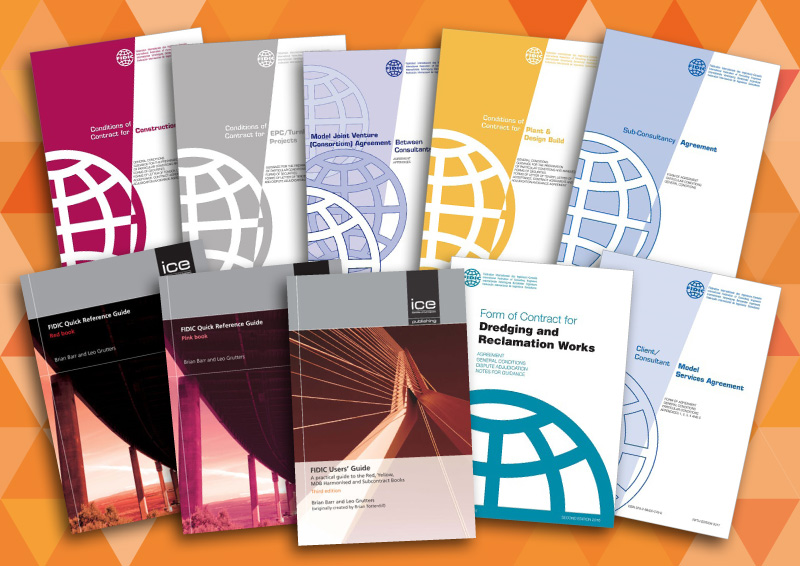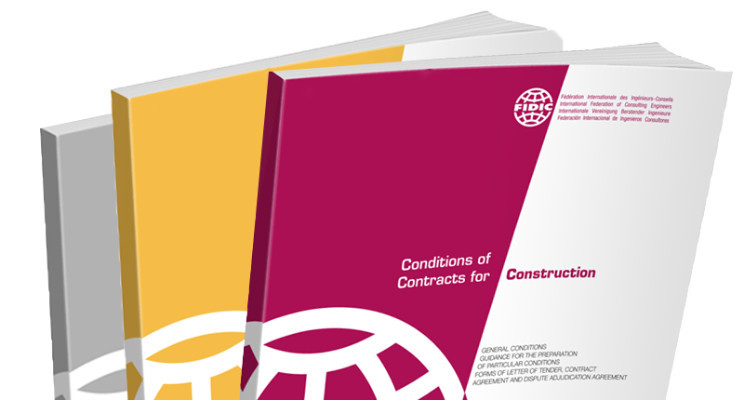The Complete Guide to FIDIC Contracts
This article is a complete guide to FIDIC Contracts and How they are changing the construction Industry. It is well Konow fact when there is an international contract, FIDIC is one of the most used types of contract documents in the world.
A FIDIC construction contract is an international standard form of a construction contract, developed by the Federation Internationale des Ingénieurs-Conseils (FIDIC). It is used in the construction industry, and primarily in civil engineering projects.
What is a FIDIC Contract and Why is it Important?
A FIDIC Contract is an international engineering contract that governs the construction of large, complex engineering projects. The contract is designed to minimize disputes and to ensure a fair distribution of risk.
The FIDIC contract was developed in the 1960s by a consortium of international engineering firms from around the world. The consortium was led by Dr. Henry Higginson, who was then chairman of the board at British construction company Balfour Beatty and a former president of the Institution of Civil Engineers in Great Britain.
The FIDIC contract was developed in the 1960s by a consortium of international engineering firms from around the world. The consortium was led by Dr. Henry Higginson, who was then chairman of the board at British construction company Balfour Beatty and a former president of the Institution of Civil Engineers in Great Britain.
The International Federation of Consulting Engineers and Designers, or FIDIC, is an international organization of contractors, engineers, designers, and construction professionals that was founded in the 1960s to standardize engineering agreements around the world. These contracts are called “FIDIC Contracts” because they are all issued under the auspices of society. A FIDIC contract is an engineering agreement that governs construction projects with a large number of technical specifications.
The FIDIC contract is important because it provides a way for parties to agree on a set of rules which will govern their relationship. It also helps to ensure that all parties have an understanding of their responsibilities and obligations. The FIDIC contract is a standardized way of structuring the construction process, and it has been used for decades by many construction companies.
For example, if you need to build a bridge across a river, you might use the FIDIC construction contract. The company will create the contract with specific clauses that will govern all aspects of their relationship during the project. If one party doesn’t follow through with their obligations under the agreement, then they’re potentially in breach of contract (and the other party may insist that they’re forced to take legal action).
What are the Different Types of FIDIC Contracts?
FIDIC (International Federation of Consulting Engineers) is an international organization that provides a set of contract conditions for the construction industry. The FIDIC contracts are a series of contracts with different types and levels of complexity.
The FIDIC contracts are based on three principles:
1. Simplicity: The contract conditions should be simple and clear to understand for both parties, even if they don’t speak the same language.
2. Equality: The contract should be fair to both parties, with no one party having more rights than the other.
3. Transparency: All information about the contract should be available to both parties in a clear and understandable way so that there can be no misunderstandings about what each party has agreed to do or pay for.
Consulting engineers who are members of FIDIC can issue FIDIC contracts to their clients. FIDIC contracts are published in English. The International Federation of Consulting Engineers has also produced a number of translations of the contract into other languages, such as Spanish and French.
The FIDIC contracts were originally drafted as three international conventions (1953, 1956, 1959). In 1996 the International Federation of Consulting Engineers introduced the “FIDIC Standard Conditions for Contracts”, which are based on those conventions and have been adopted by many countries that have their own legal system.
In May 2011, the International Federation of Consulting Engineers adapted the previous three principles to create a fourth principle for contracts between private individuals: “Transparency”. This fourth principle was designed to help people who use contracts make good decisions by providing more information, preventing unwelcome surprises, and protecting them from unfair practices such as hidden fees.
The four principles are then: The FIDIC Standard Conditions for Contracts of 1996 were used in the construction of Christchurch’s new central library building, designed by architect Warren Chalk. The contract was structured to allow the architects and engineers to seek arbitration if they were unable to agree on a disagreement over how the contract should be interpreted.
There are different types of FIDIC construction contracts standard forms. The overview of them is as follows.
FIDIC Red Book
The Red Book contains contract terms for building projects where the design is completed by the Employer. The present Red Book is not much like its predecessors. The Red Book was initially created to be used for civil engineering projects. The Red Book is no longer limited to civil engineering projects as indicated by the removal of the term “civil engineering” from the title of the current edition.
The emphasis has shifted from the nature of the works to the type of procurement, in keeping with the rest of the FIDIC suite. Therefore, the Red Book is relevant to any construction projects on which the Employer has worked as the designer.
FIDIC Yellow Book
For building projects where the contractor is responsible for the design, the Yellow Book outlines the contract terms. The phrase “electrical and mechanical works” has been removed from the title of the current edition, and in keeping with the other documents in the FIDIC suite, the emphasis is now placed more on the procurement method than the actual nature of the works.
Therefore, the Yellow Book is applicable to the provision of mechanical and/or electrical equipment as well as to the planning and implementation of construction projects. According to the standard procedures for this kind of contract, the Contractor plans and executes the works in line with the Employer’s specifications, which may involve a variety of civil, mechanical, electrical, and/or construction activities.
FIDIC Silver Book
The Silver Book is appropriate for use on projects involving process, power, and private infrastructure where a Contractor will be fully responsible for the planning and execution of the project. The Silver Book is only appropriate for use with skilled Contractors versed with sophisticated risk management procedures because the risks for completion to schedule, cost, and quality are transferred to the Contractor.
The failure of the construction project for whatever reason, whether financial or another, will put the entire project in jeopardy for many huge projects. Such projects may benefit from the Silver Book method, which will offer a higher level of cost certainty than is possible with the more conventional FIDIC suite forms.
FIDIC Gold Book
Under the FIDIC Gold Book contact form, the design is done by the Contractor. The Contractor also takes on responsibility for the building and maintenance of the Works. As a result, the Gold Book adopts the design, build, and operate method of procurement.
A standard form of contract that extends the Contractor’s sole duty to 20 years of operational service was released by FIDIC in 2008. It is referred to as the Design Build and Operates Gold Book by FIDIC. The idea is to make it clear that the Contractor must take maintenance and replacement needs into account while designing the project. The Contract does not, however, address funding and financing-related issues. The Contractor will not be a part of the Project’s finance or be compensated for the operation’s results. He only offers the service of designing, constructing, and running the Works.
FIDIC White Book
For the majority of consulting engineer services, such as pre-investment and feasibility studies, detailed design, construction administration, and project management, both for Employer-led design teams and for Contractor-led design teams on design and build commissions, White Book is appropriate for general use.
FIDIC Orange Book
In order to offer a design and build option to the then-current FIDIC suite, the Orange book was published in 1995. The Orange Book served as a model for the drafting teams when they created the 1999 suite of contracts because it was the first FIDIC contract to embrace the currently used FIDIC method of drafting.
The Red and Yellow Books were still intended for the purchase of civil engineering and plant installation, respectively, when the Orange Book was produced. At the time, it expanded the selection of contracts by adding a clear design-and-build and turnkey option.
FIDIC Green Book
For engineering and construction projects with comparatively low capital costs, the Short Form of Contract is advised. In general, it was advised not to use the Green Book for projects with a contract value larger than US$500,000 in the Guidance Notes for the Green Book. However, the Green Book might be appropriate for contracts with much higher values depending on the nature of the work and the situation.
FIDIC Blue Book
The book can be used for all dredging and reclamation projects. Due to the absence of extensive testing and taking over procedures frequently necessary for complex construction jobs, it is less suitable for challenging marine construction or offshore projects. But a skilled practitioner might readily change it because it is very flexible.
The English-language edition of the Blue Book is the one that is considered to be official. To encourage the use of the contract internationally and to aid in its further promotion in places where the translated versions are required.
What are the Benefits of Using a FIDIC Contract?
FIDIC is an acronym for “The International Federation of Consulting Engineers”. It is a worldwide association of consulting engineers and their suppliers. The group was formed in 1924 and has been operating ever since.
FIDIC provides a framework for the design, construction, operation, and maintenance of engineering projects, which is suitable for all types of client requirements. The FIDIC contract offers many benefits to construction firms. One of the most important benefits is that it helps to avoid disputes between contractors, consultants, and clients. The FIDIC contract offers many benefits to construction firms such as avoiding disputes between contractors, consultants, and clients; it also makes it easier for contractors to plan their work schedules because they know what they have to do from day one.
FIDIC provides a framework for the design, construction, operation, and maintenance of engineering projects which is suitable for all types of client requirements.
The FIDIC contract is recognized internationally for construction projects with a design value of $50 million or more. The FIDIC contract provides the certainty and protection needed to build large-scale engineering projects, such as those needed in mining, power generation, and oil and gas exploration.
The FIDIC contract also helps the project stay on schedule and keep costs down because there are fewer disputes between parties involved. This is especially important in developing countries that do not have the legal framework to protect employees and contractors in the absence of a FIDIC contract.





